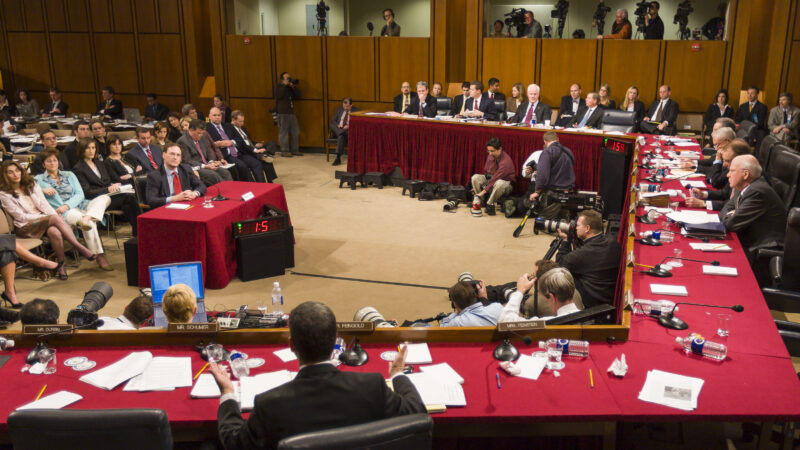The ARTICLE ONE Act
- June 14, 2023

Under the National Emergency Act (NEA), a presidential declaration of national emergency unlocks enhanced authorities contained in more than 130 provisions of law. The law originally provided a check on executive abuse of this authority, allowing Congress to terminate a declaration via a concurrent resolution, which didn’t require the president’s signature, but in 1983 the Supreme Court declared such “legislative vetoes” unconstitutional. As a result, emergency declarations effectively require a veto-proof supermajority in Congress to be overturned. Presidents of both parties have taken advantage of the vast powers afforded to them under the NEA, and there are currently 41 emergency declarations in place — the longest dating back to 1979.
The bipartisan introduction of the ARTICLE ONE Act (H.R.3988/S.1912) in the 118th Congress stands to change this. This bill would establish a necessary, meaningful check on the president’s use of emergency powers, while maintaining flexibility for the president when needed most — in the immediate aftermath of a crisis.
How the ARTICLE ONE Act fixes a glaring gap in emergency powers How the ARTICLE ONE Act fixes a glaring gap in emergency powers
An Overview of the Bill
The ARTICLE ONE Act would require any national emergency declared by a president to expire after 30 days unless a majority of both houses of Congress have approved it, using expedited procedures that would prohibit filibusters, allow any member to force a vote, and ensure timely action. The legislation enjoys support from lawmakers across the political spectrum and a broad cross-partisan coalition of organizations.
Under this legislation:
- A president’s declaration of national emergency may stay in place for up to 30 days. At that point, the emergency would automatically terminate unless a majority of both the House of Representatives and the Senate have approved it. The bill prescribes expedited floor procedures to ensure timely consideration of the issue, prohibiting filibusters and allowing any member to force a vote.
- If Congress approves a national emergency declaration, the emergency can stay in place for up to one year. The president may then renew the declaration for additional year-long periods with the approval of Congress, again using expedited floor procedures.
- If Congress does not approve an emergency declaration (or its renewal), the president may not declare an emergency based on the same facts and circumstances for the remainder of his or her term.
- When the president declares a national emergency, he or she must transmit a report to Congress describing the circumstances necessitating the declaration, estimating the duration of the emergency, and summarizing the actions that he or she intends to take and the authorities that will be invoked. The president must then submit additional reports every six months on the status of the emergency, as well as the actions taken and authorities invoked during the reporting period.
Support for the Bill
The ARTICLE ONE Act enjoys the support of a wide range of lawmakers from across the political spectrum including Reps. Chip Roy (TX-21), Steve Cohen (TN-09), Scott Perry (PA-10), and Dina Titus (NV-01). In the Senate, the bill is sponsored by Senator Mike Lee (R-UT) and is cosponsored by Sens. Richard Blumenthal (D-CT), Mike Braun (R-IN), Chris Murphy (D-CT), James Rich (R-ID), and Mike Crapo (R-ID).
The legislation has been endorsed by a number of organizations, including the American Civil Liberties Union, Brennan Center, Due Process Institute, FreedomWorks, National Taxpayers Union, Niskanen Center, Project on Government Oversight, Protect Democracy, Public Citizen, R Street Institute, Rainey Center, Taxpayers for Common Sense, Taxpayer Protection Alliance, TechFreedom, and Third Way.
Featured in the Press
Bipartisan effort underway in Congress to curb 'unchecked presidential power' during national emergencies
June 9, 2023
Related Content
Join Us.
Building a stronger, more resilient democracy is possible, but we can’t do it alone. Become part of the fight today.
Donate
Sign Up for Updates Sign Up for Updates
Explore Careers Explore Careers
How to Protect Democracy How to Protect Democracy



